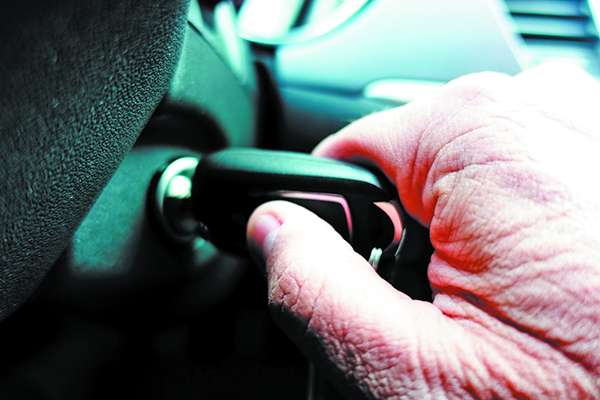Most of us try to make our houses as safe as possible, but what appears to be a hazard to one person may not be clear to someone else. For example, we all know that loose bannisters and slippery floors can cause accidents, but handling food in the kitchen can create many less obvious risks. To spot not-so-apparent hazards…
- Ask friends or relatives to walk through your house looking for hazards that you may have overlooked. A friend might spot a loose doorknob that you’ve neglected to fix. Though you may be accustomed to the defective doorknob, one day when you pull on the knob, it could come off in your hand and trigger a fall, especially if you’re carrying something in the other hand.
- Keep track of close calls. When you barely avoid an accident, jot it down. Example: When you nearly trip over a bump in your carpet, don’t just consider yourself lucky — write yourself a note to fix the situation.
Potential hazards that are often overlooked…
- Kitchen tasks. As we grow older, we often lose strength and agility, making it riskier to use knives and handle hot food.
For cutting food, consider semicircular cutting tools, such as the Rocking T Knife, that let you slice meat, bread and other foods by rocking the blade back and forth. Semicircular knives require less strength and are usually considered safer than standard butcher knives. Cost: About $30 from kitchen appliance stores.
To make handling hot food easier, consider a “push-pull stick.” These devices grip the oven rack so you can easily slide it in or out from a safe distance. Cost: About $15 at kitchen speciality stores.
- Poorly lit porches and entryways. It’s easy to trip over a kid’s baseball or other unexpected object, such as a windblown branch, that winds up on a walkway or porch step — especially at night.
Solution: Install bright, exterior motion-sensor lights that go on when they detect motion within about 25 feet. These lights have the added advantage of deterring intruders. Cost: About $40 to $75, plus installation by an electrician.
Also helpful: A remote-controlled light switch that lets you turn on an interior or exterior light from your car or as you approach your house on foot. These pocket-sized switches work at a maximum distance of about 50 feet. Cost: About $20 to $40 at home appliance stores.
- Getting up from the couch. Even young, healthy people can easily lose their balance when they stand up after being in a sitting position for a long time.
Solutions: Stand up slowly while grabbing on to the arm of the couch or chair before taking a step. If the arm isn’t high enough to be of help, consider a CouchCane, a stabilizing device that adjusts in height from 29 to 32 inches. Cost: About $90 at stores that sell wheelchairs, canes and other products for the physically impaired.
- Carpets. Many people believe that carpeting is safer than wood flooring because if you fall, a carpet may cushion the impact. In fact, any fall from a standing position can be serious.
Natural wood usually creates the safest floor as long as it’s not coated with a slippery finish. Reason: Unlike carpeting, wood floors are flat surfaces.
Low-pile carpeting is generally safe as long as there are no bulges. If you want an area rug, put a slip-resistant mat underneath, and secure the rug and mat to the floor with carpet tacks. Vinyl flooring is also safe, and so is tile, unless the indentations between individual tiles are deep enough to create an uneven surface.
- Getting out of bed. Even though you might have a lamp on your nightstand, turning it on might be tricky when it’s dark. Alternative: A low-wattage light that will stay on in the bedroom during the night. Most people who are accustomed to sleeping in the dark quickly get used to a dim light, but if you have persistent problems, lower the wattage.
- Medication and nutrition. We shouldn’t drive a car when medicine makes us drowsy or dizzy, but few of us think about the fact that these side-effects can also cause accidents around the house. When you get up from the couch, for example, a stumble can be serious if medication makes you unsteady on your feet.
The problem is compounded if we become accustomed to the slight drowsiness or dizziness that drugs can cause.
Solution: Ask your doctor about the combined effects of all the medication you’re taking, including over-the-counter drugs. If they cause drowsiness or dizziness, don’t rush when you move around the house, especially when getting up from a chair or bed. And don’t try to carry heavy objects, particularly pans of hot food in the kitchen.



